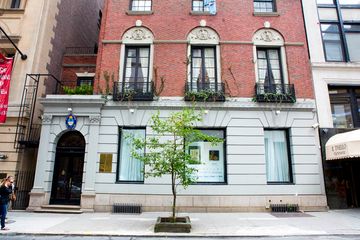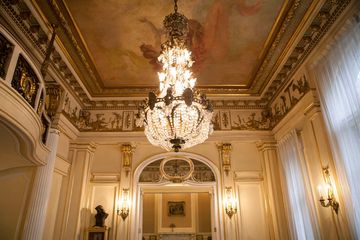As I was approaching the corner of Madison Avenue, an unexpected breathtaking building stood in front of me. Built in the early 1900s Beaux-Arts style, and designed by C. P. H. Gilbert, this mansion was originally owned by Dutchman, Joseph Raphael De Lamar. Considered to be one of the wealthiest men of his time, he made his fortune several times over in the 1800s as a ship contractor, investing in the mining industry in Colorado and later on Wall Street. After his death, the American Bible Society purchased the De Lamar Mansion for one year and then, for the next fifty years, it was home to the National Democratic Club. Unfortunately, in 1973 when the Polish government purchased the house, it was in a terrible state of disrepair. Working meticulously on both the exterior and interior, Polish conservators were able to restore the mansion to its original splendor. Today, it is considered to be one of the most magnificent houses in Manhattan. Thanks to the deputy counsel general, we gained entry inside the five-story mansion to take photos, and to experience firsthand, how conscientious the Polish preservationists were in conserving the carved stone, gold crests, marble ornaments, murals on the ceiling and original Tiffany glass windows. With the Morgan Library directly across the street, these two masterpieces allow people to recall the days of grandeur over a century ago.


